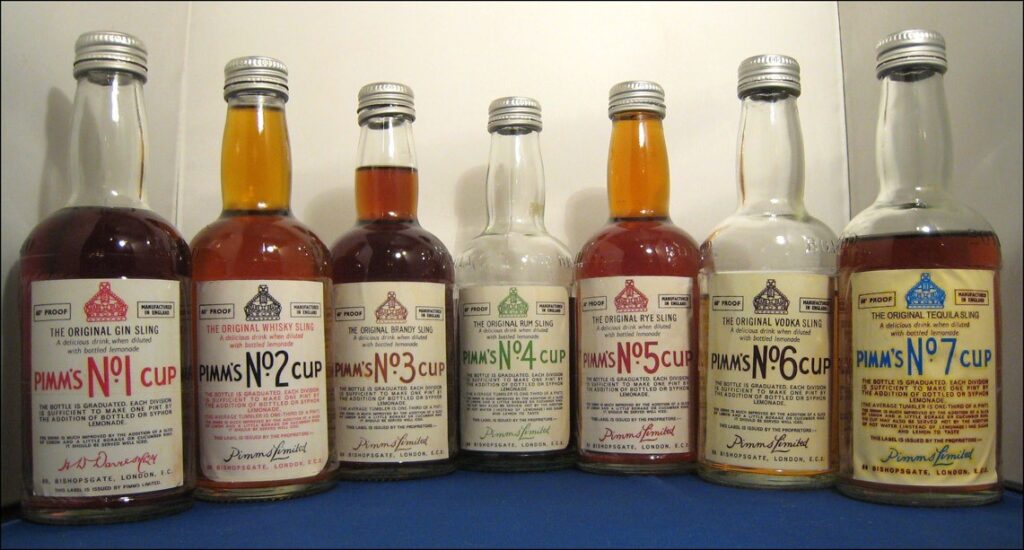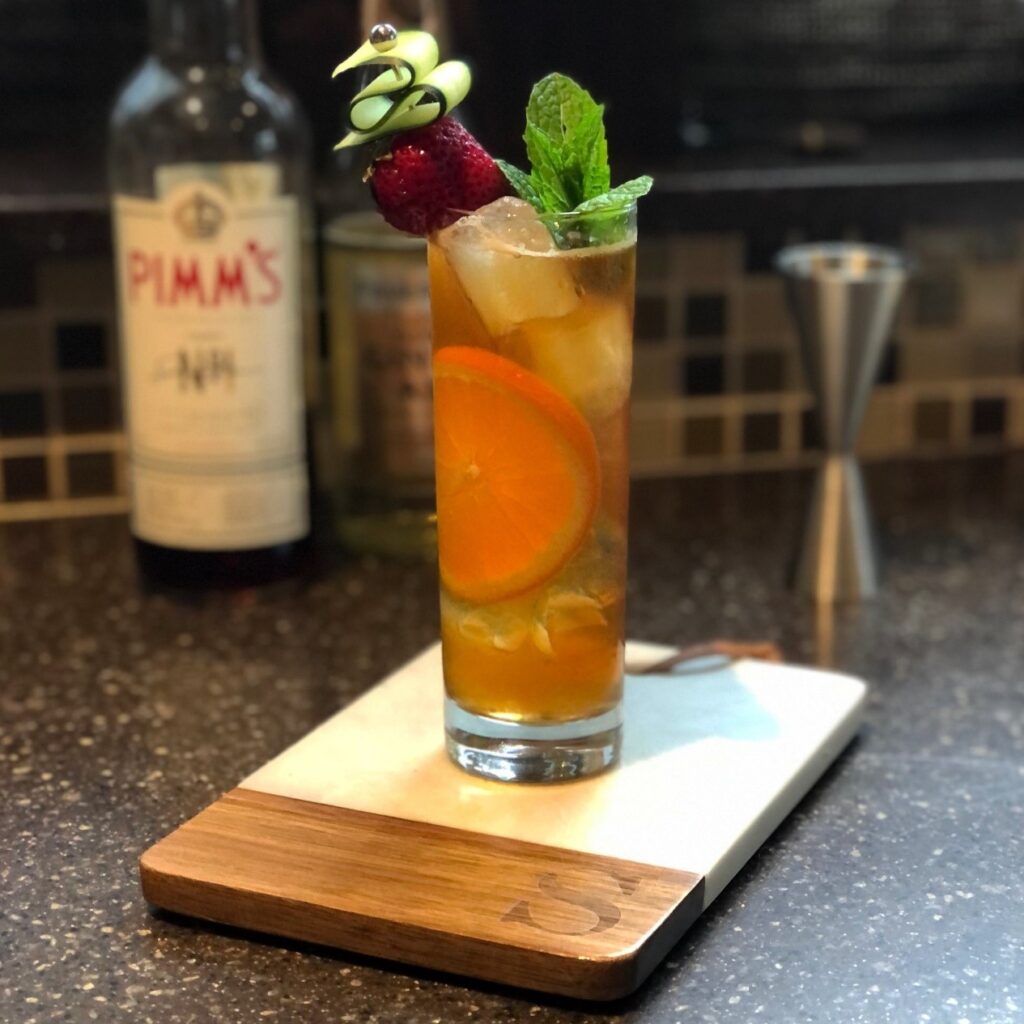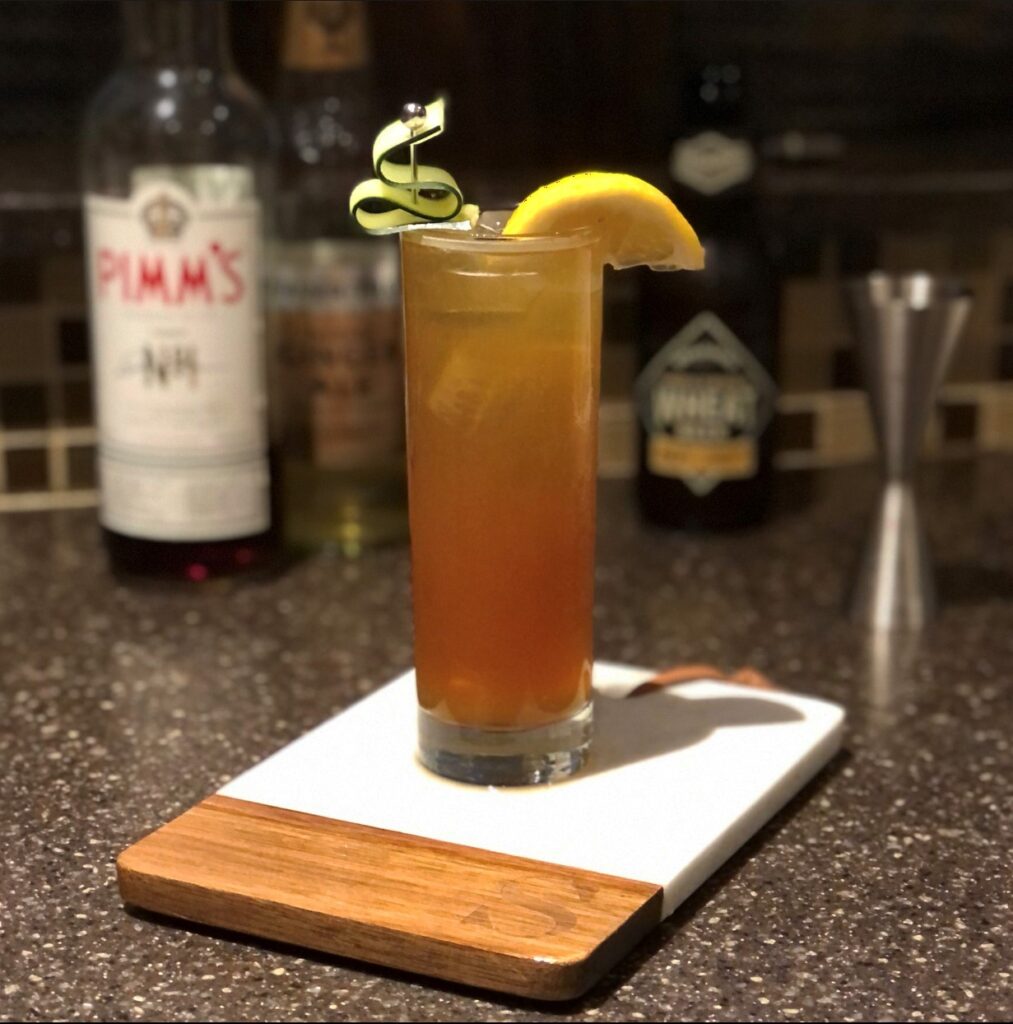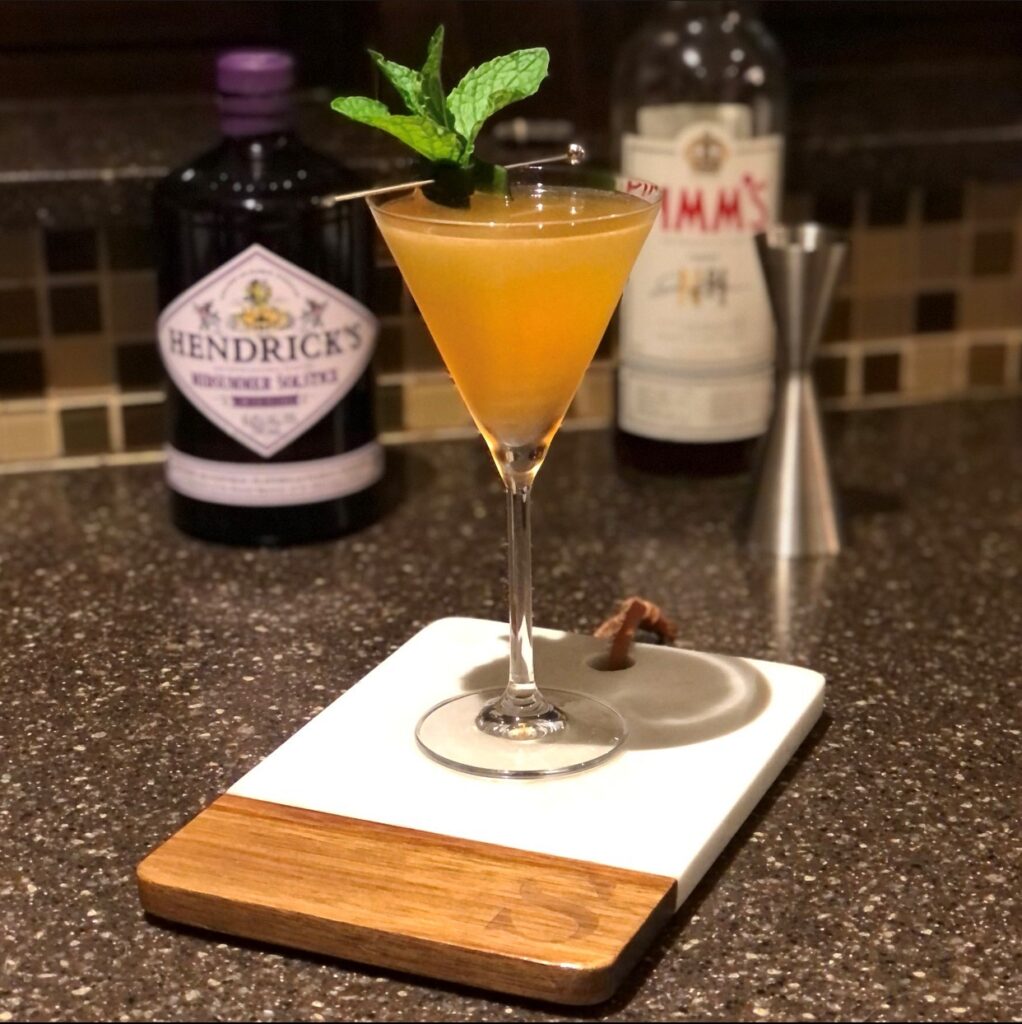Now that we have moved past Memorial Day, we begin our transition into summer. This means my drinking habits have begun to shift to match the weather as well. A nice bourbon neat with a couple drops of water (to help open up the flavor) is perfect after a long day at work when the weather is cool or cold, but in summer I want a long drink full of ice. Which brings us to this little beauty. The Pimm’s Cup is one of the oldest named drinks in print, but it doesn’t get the respect it deserves. Low in alcohol, so several won’t mess you up while drinking during the heat of the day, and it has a nice complex flavor with a multitude of variations.
The Pimm’s Cup is associated with Wimbledon (not to mention the Chelsea Flower Show and polo matches in London), but the drink predated the tennis championship by over 50 years. It was created by James Pimm, a fishmonger and owner of Pimm’s Oyster Warehouse, an oyster bar in London in 1823. But we need to go back over a hundred years further for the whole story. In 1688, William the Orange ascended to the throne of England. King William was born in Holland and married Queen Mary II, uniting the two countries. William moved to England and brought Dutch Jenever, a predecessor of gin, with him and introduced it to high society.
In 1689 and 1697 the British, in an effort to punish France, enacted several pieces of legislation aimed at restricting the importation of brandy, and at the same time broke the monopoly of London gin distillers to give Londoners an alternative to the now expensive French spirit. Gin was popular among the aristocracy and royalty at the time, and the new legislation struck down the requirement for a license to distill gin. Americans know from Prohibition that A) it is really easy to make gin, and B) it is even easier to make bad gin. The 50 years-long Gin Craze began as hundreds of new small-time distillers began (poorly) making the spirit, and virtually everyone started drinking it. The distillation, and subsequent drunkenness, exploded in England, especially within the poorer neighborhoods of London, where the cost of high-proof gin fell below the cost of ale. Public drunkenness and all manner of alcohol induced social ills followed for several decades, wreaking havoc on the economy and the social fabric of London. Gin began being infused with all types of botanicals to make it palatable (think sloe gin), and it is during this time that the recipe for Pimm’s No. 1 was created.
Pimm refined the infused gin, added sparkling lemonade, and served it with ice in a tall glass, referred to in England at the time as a ‘summer cup’, creating the Pimm’s Cup. The refreshing highball is one of the first named cocktails. Most drinks at the time were referred to by their type – whiskey cocktail, gin sling, whiskey julep – which established the drink structure as well as the base spirit.

With the drink’s success, the infused gin spirit was branded as Pimm’s No. 1 in 1851, and it began to be bottled in 1865. The restaurant/bar and brand were purchased several times and in the first half of the 1930’s, Pimm’s No. 2 (Scotch based), Pimm’s No. 3 (brandy based), and Pimm’s No. 4 (rum based) were introduced, with the latter to offer a colder weather version of No.1. Pimm’s No 5, consisting of rye, was produced in Canada in the 1930s as well, followed by Pimm’s No. 6 with vodka. There was even a Pimm’s No. 7 introduced into the American market in the 1960’s, using tequila as a base, but so little of it was made that it is exceedingly rare. In 1969 the line was purchased by Diageo (Distillers Company Ltd. at the time) and in 1970 all were discontinued except for No. 1. Since, Nos. 4 and 6 were revived as Pimm’s Winter Cup (No. 4) and Pimm’s Vodka Cup (No. 6) in 2004.
The traditional Pimm’s Cup is served ‘English-style’, with a carbonated clear lemonade, but ginger ale is an acceptable substitute. The drink is heavily garnished with any variation of apple, cucumber, orange, lemon, strawberry, and mint. Served with champagne, it becomes a Royal Pimm’s Cup, and the Winter Cup is typically served with warm apple cider. You can even try a Pimmlet, adding Pimm’s to the traditional gin Gimlet.
In 1971 the Pimm’s Bar was opened at Wimbledon, and over 80,000 pints of Pimm’s Cup are consumed during the tournament each year. Along with champagne, the Pimm’s Cup is one of the two official cocktails of Wimbledon – as well as the Chelsea Flower Show, the Henley Royal Regatta, and the Glyndebourne Festival Opera.

Pimm’s Cup
2oz Pimm’s No. 1
1/2oz fresh lemon juice
Ginger ale to top
Orange slice garnish
Strawberry garnish
Cucumber ribbon garnish
Mint sprig garnish
Add ice to a collins glass and build the drink in the glass; Pimm’s, then lemon juice then top off with ginger ale. Add the garnishes and serve.

Rustic Pimm’s Cup
2oz Pimm’s No. 1
1/4oz fresh lemon juice
1/4oz fresh lime juice
1/4oz cucumber syrup (I muddled three thin cucumber slices with 1/4oz simple syrup)
Splash of soda water
2oz ginger ale
2oz wheat beer
Lemon slice or wheel garnish
Cucumber slice or ribbon garnish
Mint sprig garnish
If using cucumber syrup, build the drink in the glass. I muddled the cucumber slices with the simple syrup and juices, then added the Pimm’s No. 1 and gave it a stir to incorporate. I then double strained into a collins glass with ice and added the soda water, ginger ale, and wheat beer. Add the garnishes and serve.

Pimmlet
1 1/2oz botanical gin (I used Hendrick’s Midsummer Solstice)
1/2oz Pimm’s No. 1
1/2oz simple syrup
1/2oz fresh lime juice
4 thin slices of cucumber
4 parge mint leaves
Cucumber ribbon garnish
Mint sprig garnish
Place the mint in a shaker tin and cover with the cucumber slices. Add the simple syrup and muddle gently, taking care to not tear the mint leaves. Add the Pimm’s No. 1, the lime, and the gin and shake for 15 seconds with ice. Double strain into a chilled coupe or cocktail glass. Slap the mint between your palms and add the garnishes. Serve.
Grab one of these – or any of the other variations of the Pimm’s Cup – and enjoy the warmer weather.
Cheers!
Bill
AotCB-039



